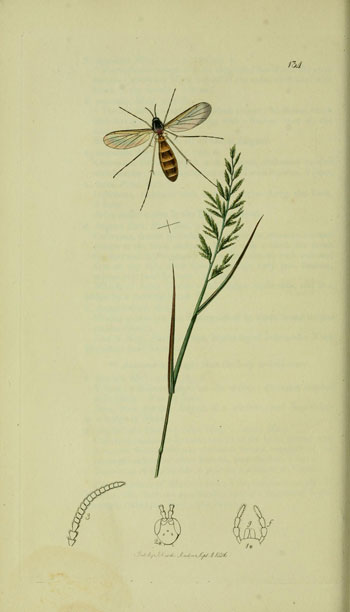Fungus Gnats? – Lose the Watering Can
By Chris Williams on May 27, 2014.
 Gnat Question
Gnat Question
I’m a receptionist in a large office building in downtown Boston. In the main lobby, we have several indoor plants in a large brick planter. We have an ongoing problem in the lobby with little gnats. We had an exterminator spray but the gnats came back. I’m responsible for watering the plants and I noticed that the gnats seem to be associated with the plants. Do you have any idea what they are and how we can get rid of them?—W. K., Boston MA
Answer
I think you are probably talking about fungus gnats which are indeed associated with potted plants. I hate to say it, but fungus gnats develop when plants remain too wet and are never allowed to dry out between waterings.
The little black gnats are mostly nuisance pests that run across surfaces or collect at windows or lights. The wormlike larval stage of this fly lives in the soil in the potted plants where it feeds on…guess what, fungus! In large numbers, larvae can damage the plant’s roots, too. You have an ongoing problem because after the adult flies are killed, new flies emerge from the infested soil.
Controlling the Gnats Can Be Very Simple
As for what you can do, adult flies can be killed with insecticide sprays as you know, but the spray won’t affect any larvae that are still developing in the pots. Permanent control is actually pretty simple, and pesticide-free. Simply hide the watering can for a while. Taper off watering the plants until you get to the point where you can let them go completely dry between waterings. Letting the soil dry out will kill both the fungus in the soil and the fungus gnat larvae and eggs. Then don’t let yourself get back in the habit of watering the plants to death!
There are a couple of other things you can do to help manage fungus gnats. You don’t say whether the plants are in individual pots or sharing soil in a community bed:
- Remove mulch, or other top dressings, from the pots or bed (at least temporarily) to help the soil dry.
- Add a layer of sand to the top of the pots or bed which discourages the female gnat from laying her eggs in the pots.
- If the plants are in pots or the bed is not too large, you can even repot the plants, using new, sterile potting soil and discarding the old.
It may take a little time before new gnats stop appearing. If drying the soil doesn’t work, there are pesticides that can be applied as a soil drench that will soak in and kill fungus gnat larvae. Make sure the label on the product says that it can be used indoors.
By John Curtis (http://www.biodiversitylibrary.org) [Public domain], via Wikimedia Commons